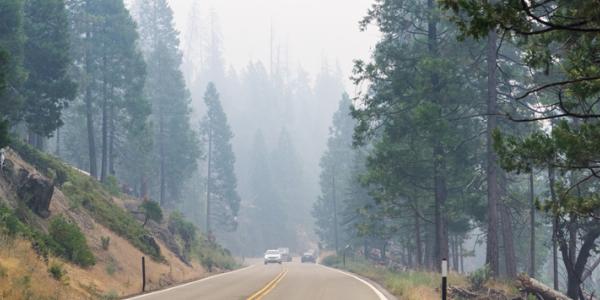
Poor indoor and outdoor air quality, often caused by fires in the region, can lead to symptoms and long-term health risks.
You may not think about it until you notice symptoms — a nagging cough, a tickle in your throat, frequent sneezing, shortness of breath — but the quality of the air you breathe can affect your health now and in years to come. Children, the elderly and people with asthma or other chronic conditions may be at a higher risk, but anyone can be affected.
“It’s important to be proactive and think about the quality of the air you’re breathing,” says Michelle Canfield, MS, FNP-BC, a nurse practitioner in respiratory care services and a tobacco treatment specialist at El Camino Health's Mountain View Hospital. “For instance, are you exposed to anything in your environment at home or at work that could cause problems now or later?”
Outdoor Air Quality
The area where you live can make a huge difference in the quality of the air you breathe. If you live near farmland, pesticides and other chemicals can be a concern. Construction, storm damage and even lawn care can affect air quality and cause symptoms or health problems in some people.
“Here in northern California, for instance, we have our share of wildfires,” says Canfield. “It’s always a good idea to check the air quality index before you go out and to be aware of air quality when traveling in the United States or internationally.”
Many newspapers and local news programs report the air quality index, and you can also visit www.airnow.gov.
Common paper air masks can filter dust and other large particles, but for smoke, the California Department of Public Health recommends respirators or a non-medical grade mask rated KN95 or P100. Make sure it has a good seal.
Still, it’s important to limit exposure. That means taking frequent breaks indoors, and staying indoors with windows closed when the outdoor air quality index is especially high.
On the Job
According to the Occupational Safety and Health Administration, more than 5 million workers are required to wear respirators in the U.S. But even those in offices, malls and other indoor establishments can be at risk.
Knowing your rights, your employer’s responsibilities and your own can help protect you from work-related health problems. If masks or respirators are provided, use them correctly and consistently. Also, talk to your doctor about any high-risk work you’ve done and any preventive steps you need to take.
At Home
The air quality in your home may be more difficult to assess. Pets, mold from severe water damage, and hobbies such as woodworking can cause symptoms ranging from mild to severe. The dander, saliva and waste from cats, dogs, rodents and birds can affect some people.
One serious and often overlooked risk is radon, a radioactive gas that occurs naturally from the breakdown of uranium. It’s the second leading cause of lung cancer after smoking, and it’s odorless and colorless. The Environmental Protection Agency recommends testing your home for radon using a simple and inexpensive test kit. If needed, you can work with a certified radon mitigation contractor to improve ventilation or take other steps. Find out more at www.epa.gov/radon.
If anyone in your home smokes, it’s best that they smoke outside. A separate and well-ventilated room can help contain the carcinogens and other health risks. Homes with infants or small children should be kept smoke free, as their lungs are still developing. Keep in mind that smoke can cling to clothing and hair, which can affect those around you.
If you’re concerned about health risks related to air quality, are having symptoms or need help quitting smoking, we’re here for you. Find out more about lung care at El Camino Health.
This article first appeared in the February 2019 edition of the HealthPerks newsletter and was updated in August 2020.

